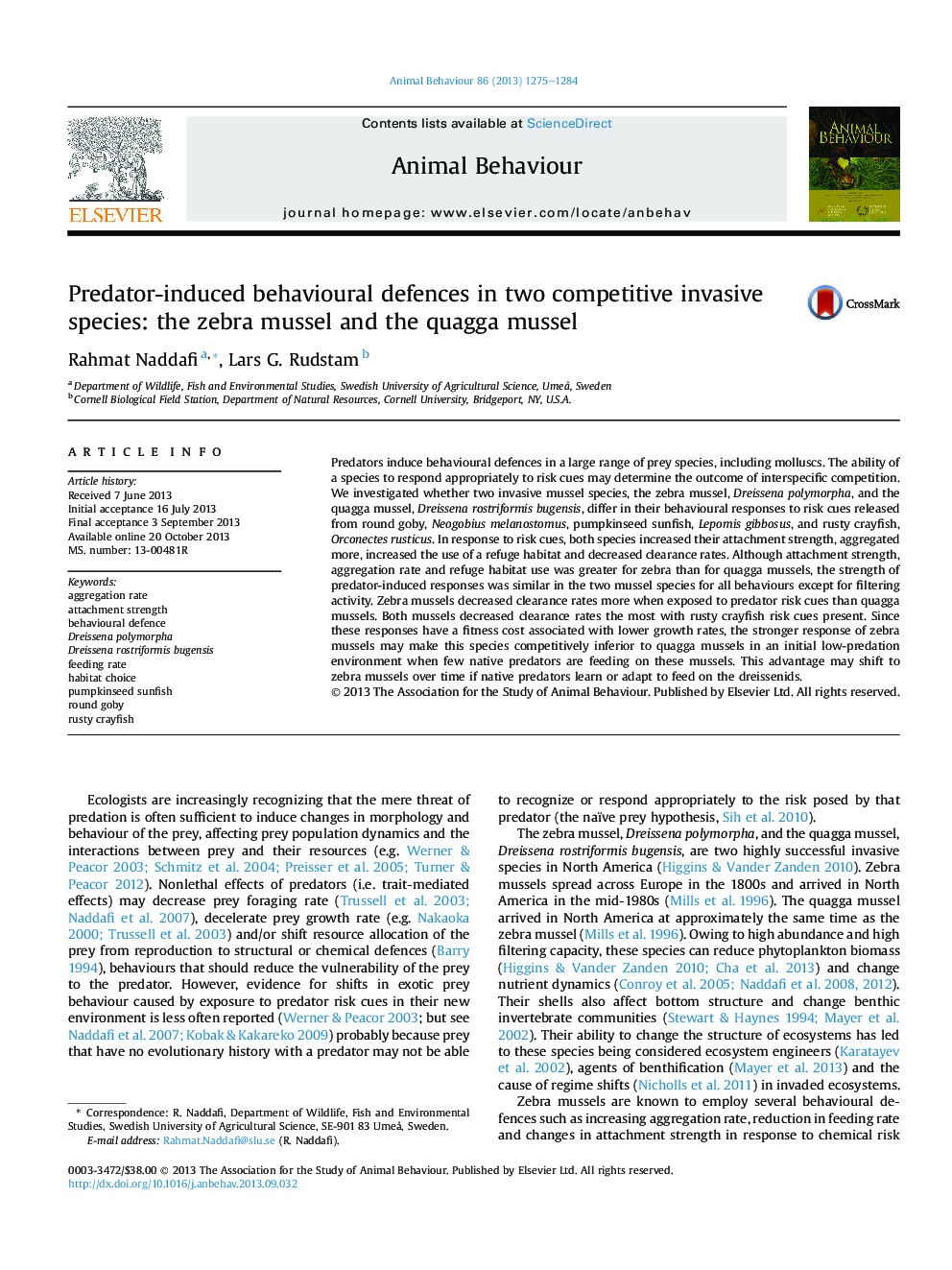| Article ID | Journal | Published Year | Pages | File Type |
|---|---|---|---|---|
| 10970643 | Animal Behaviour | 2013 | 10 Pages |
Abstract
Predators induce behavioural defences in a large range of prey species, including molluscs. The ability of a species to respond appropriately to risk cues may determine the outcome of interspecific competition. We investigated whether two invasive mussel species, the zebra mussel, Dreissena polymorpha, and the quagga mussel, Dreissena rostriformis bugensis, differ in their behavioural responses to risk cues released from round goby, Neogobius melanostomus, pumpkinseed sunfish, Lepomis gibbosus, and rusty crayfish, Orconectes rusticus. In response to risk cues, both species increased their attachment strength, aggregated more, increased the use of a refuge habitat and decreased clearance rates. Although attachment strength, aggregation rate and refuge habitat use was greater for zebra than for quagga mussels, the strength of predator-induced responses was similar in the two mussel species for all behaviours except for filtering activity. Zebra mussels decreased clearance rates more when exposed to predator risk cues than quagga mussels. Both mussels decreased clearance rates the most with rusty crayfish risk cues present. Since these responses have a fitness cost associated with lower growth rates, the stronger response of zebra mussels may make this species competitively inferior to quagga mussels in an initial low-predation environment when few native predators are feeding on these mussels. This advantage may shift to zebra mussels over time if native predators learn or adapt to feed on the dreissenids.
Keywords
Related Topics
Life Sciences
Agricultural and Biological Sciences
Animal Science and Zoology
Authors
Rahmat Naddafi, Lars G. Rudstam,
